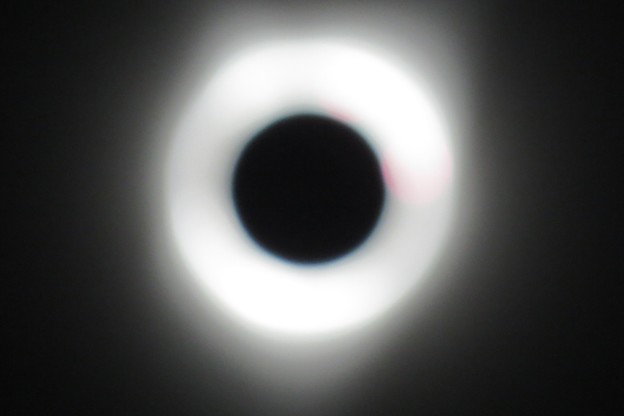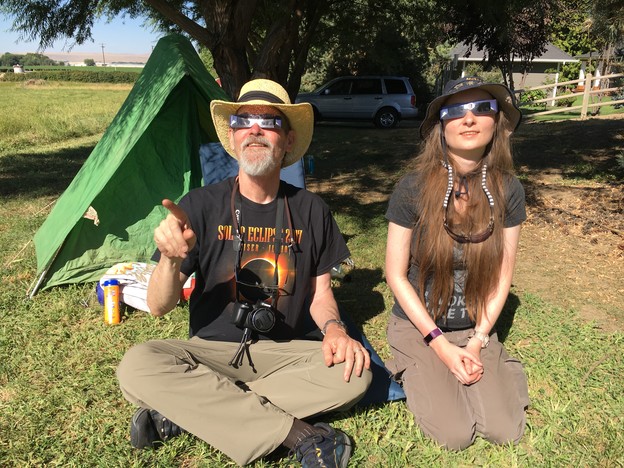|
Dale Gieringer
It was the exact right conjuncture of time and space for us to be in Weiser, Idaho as the moon’s shadow passed through at 11:25 AM MTD Aug 21, 2017. Skies were clear and the view expansive from our campground hosted by a local family. Arianne and I had flown in via Boise (Alice unfortunately couldn’t join us because she was travelling in Singapore).
The traffic into Weiser (pron. Weezer), a sleepy rural town best known otherwie for its fiddling festival, was suprisingly light when we drove in the evening before. We had decided not to risk driving in from Boise on the same day (an hour away under normal conditions), since the two-lane approach via US 95 was likely to be jammed. Instead, we drove in the evening before via a backroad after an enjoyable rafting trip on the Payette River.
There had been worrisome high cirrus clouds in the evening, but they were gone by the morning. Not having astronomical photo equipment nor space in our baggage for a tripod, we left it to the professionals to take proper photos of the sun. Instead, we concentrated on our surroundings, such as the multiple crescent images cast by the sun pre-totality. (For photos see https://www.dropbox.com/sh/mut3xxdqmbi8mjd/AAA9h1UUJ7Ad2VgDAaHddYita?dl=0) The eclipse sneaks up on you. The moon takes its first nibble about an hour and a quarter before the climax. Without eclipse glasses, you’d never see it. Neither would you notice it as the bite becomes larger, eventually moving past the sun’s center, blocking most of its light and forming a crescent that is still so blinding your eyes can’t tell anything is different. In the final quarter hour or so, with the sun 90% gone, the day began to seem noticeably dimmer and cooler. Still, if you weren’t looking for it you might not have noticed it. However, if you cast your eyes on the ground you might have noticed the myriad crescent images cast by the sun through foliage and pinprick lightholes. In the final few minutes before zero hour, the birds took notice and settled down to roost. At that point just a slim sliver of the sun was left, but it was still too blinding to discern without without eclipse glasses.
In the last sixty seconds, a thrill of anticipation ran through the crowd. Looking to the west, the hills darkened as the moon’s shadow rushed in at 2000 miles per hour from Oregon. Then totality - two short minutes in which it was impossible to focus on everything I would have liked to. Gasps from the crowd as the black eye of the sun emerged in its white coronal halo. Stars burst into view - Venus, Sirius and others, in an eerie twilight sky illuminated by the corona. Roosters crowed. I struggled with limited success to get my electronic camera to focus on the sun. Then as quickly as it came, the eclipse ended with a sudden burst of light. For a brief second or two, the sun appeared as a blinding diamond ring. Then the moon’s shadow swept on to regions eastward, while Venus remained visible and crescent shadows re-emerged everywhere. When it was over, the spectacle left us all delighted and grateful to have been there. The road back to Boise was slow going as expected, but the voyage was memorable, and I have a souvenir Weiser eclipse T-shirt to boot!
So now I’m looking forward to coming back to Cincy for the next eclipse on April 8, 2024!   |